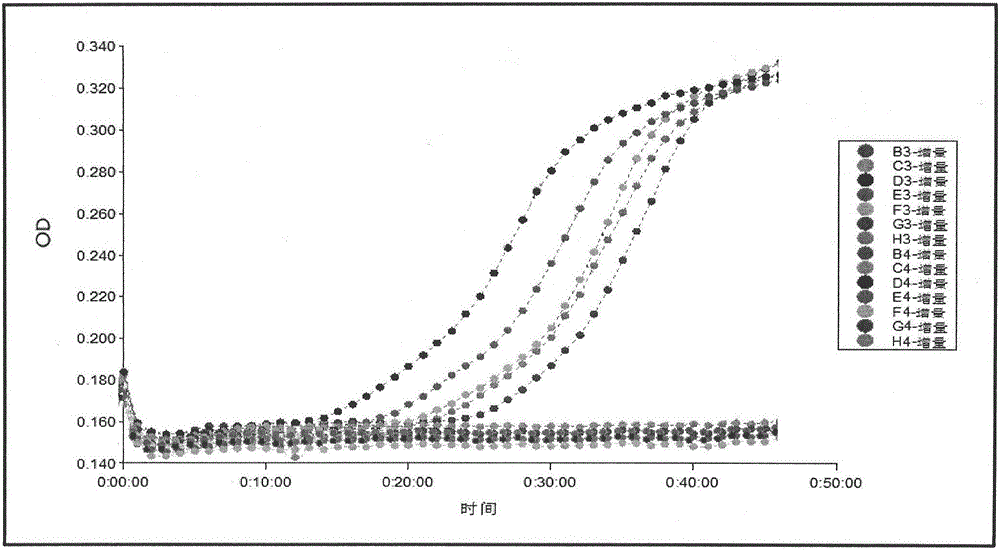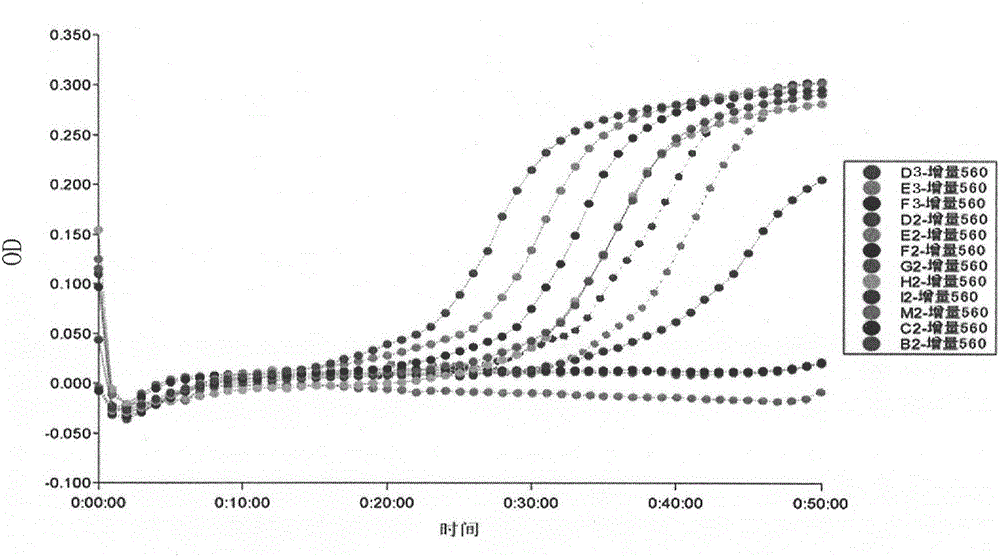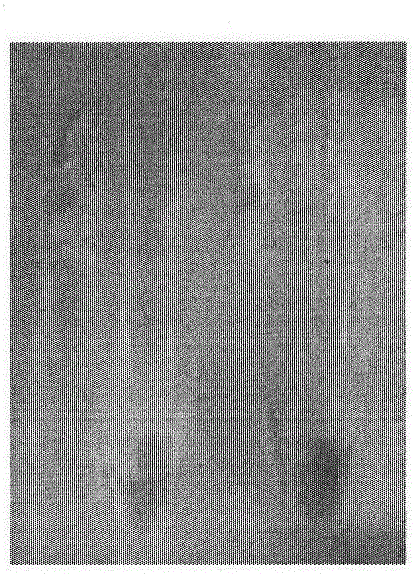Nucleic acid (DNA/RNA) real-time constant-temperature gene amplification detection method
A constant temperature gene amplification and real-time detection technology, applied in the biological field, can solve the problems of inability to quantify, easy to pollute, and high detection cost
- Summary
- Abstract
- Description
- Claims
- Application Information
AI Technical Summary
Problems solved by technology
Method used
Image
Examples
Embodiment 1
[0057] Embodiment 1 A kind of specificity result of nucleic acid (DNA / RNA) real-time constant temperature gene amplification detection
[0058] LAMP amplification was performed on the negative controls of other microorganisms that had homology to the 9 HBV nucleic acid sequences, were likely to cause the same or similar clinical symptoms, and were normally parasitized at the sampling site or were likely to be concurrent. The results were as follows: figure 1 As shown, the 5 HBV sample reaction tubes showed an upward trend in the amplification curve in about 30 minutes, which was a positive result, and the amplification curves of the 9 negative control sample reaction tubes had no upward trend, which was a negative result.
Embodiment 2
[0059] Example 2 Sensitivity results of a nucleic acid (DNA / RNA) real-time constant temperature gene amplification detection method
[0060] The concentration of the initial HBV sample for fluorescence quantification was 8.1x10 7 copies / μl. Take the 10-fold diluted sample as the template for detection, and the results are as follows: figure 2 As shown, the detection limit of this method is 8.1copies / system, and the detection limit of PCR method is generally 10 2 copies / system.
Embodiment 3
[0061] Example 3 Visible light visual detection results of a nucleic acid (DNA / RNA) real-time constant temperature gene amplification detection method
[0062] According to the optimized conditions monitored by the microplate reader, add a color indicator, react at 63°C for 30 minutes, and observe with the naked eye. image 3 In order to observe the results, the left tube is the negative control, and the right tube is the reaction using the DNA of the HBV sample as the template. The left tube is pale yellow after the reaction, and the right tube is brownish red after the reaction. Matching kits and related Lamp primers are designed. After adding the samples to be tested, use an inexpensive water bath to react at 63°C for 30 minutes, and the results can be quickly observed without opening the cover, avoiding pollution.
PUM
 Login to View More
Login to View More Abstract
Description
Claims
Application Information
 Login to View More
Login to View More - R&D
- Intellectual Property
- Life Sciences
- Materials
- Tech Scout
- Unparalleled Data Quality
- Higher Quality Content
- 60% Fewer Hallucinations
Browse by: Latest US Patents, China's latest patents, Technical Efficacy Thesaurus, Application Domain, Technology Topic, Popular Technical Reports.
© 2025 PatSnap. All rights reserved.Legal|Privacy policy|Modern Slavery Act Transparency Statement|Sitemap|About US| Contact US: help@patsnap.com



